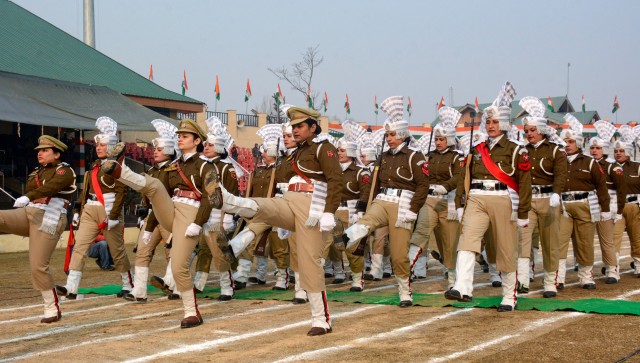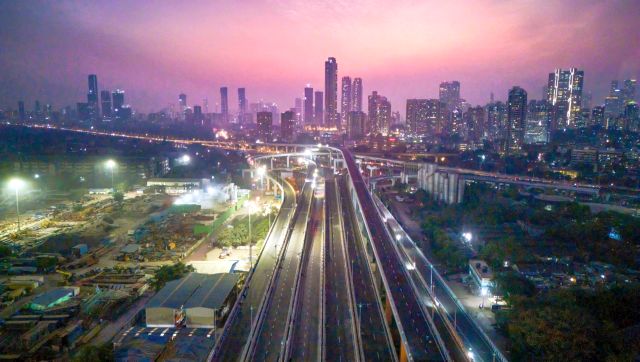By Seema Kamdar
A playground in Babulnath in south Mumbai was leased to a school by the municipal corporation. The school took over the place seemingly with honourable intentions. Gradually, the veneer began to peel. The badminton court was let out for a fee; the ground was let out for weddings and parties. Over time, the playground had reinvented itself as the geographical extension of the school.
That, however, was not what was envisaged when the Municipal Corporation of Greater Mumbai (MCGM) gave it out. The idea was to maintain, and protect the space on behalf of the public. When too many complaints made it difficult for the civic authorities to let the school continue, an influential politician stepped in and hosted a festival there instead.
This is the story of most public open spaces in Mumbai that have been given out on adoption or caretaker basis. As a city, Mumbai lacks a comprehensive vision for its few-and-far-between open spaces – 1,068 plots measuring 1,200 acres, amounting to one square metre per capita as against 25 sq metres per capita in New York, and nine metres prescribed by the World Health Organisation.
Far from mapping out these precious green lungs and ensuring they ventilate the city, they are readily leased to the first available customer, mostly to allow the MCGM to get it off its charter of duties. After all, as the corporation says, taking care of the open spaces does not fall under its obligatory roster. Rather, it’s a discretionary activity, and clearly not important. All that it expects from its lessees for such spaces – also called RGPG for recreation grounds, gardens, parks and playgrounds – is a perimeter fence, a security guard and a toilet; the rest was up to its imagination.
Given their orphan status, the city’s open spaces or whatever is left of them after their takeover by the private parties, are in shambles. The adoption is renewable every five years but none of the truant agencies misusing public space ever considered that as a deterrent in their ambitious plans for a virtual takeover of the land. The caretaker policy, developed in 1991, permitted construction on 15 percent of the area, such as club, gymnasia, etc. The history of the adoption and caretaker policy of Mumbai of public open spaces is criss-crossed with stories of rampant misuse, illegal construction, controlling public access or restricting their hours of free access, exploitation for commercial benefit, neglect of maintenance, poor or no security leading to encroachment and such brazen flouting of the rules.
Many a handover turns into a takeover. It is common to find the agencies managing the open spaces affiliated to politicians. The MIG Club in Bandra is a case in point. In many clubs, the membership fee runs into lakhs of rupees, which simply amounts to usurping of public ground for private benefit.
As Shailesh Gandhi, public interest activist and former central information commissioner, says, “In our country, possession is de factor ownership. This ends up transforming the adoption policy into an abduction policy.”
This is the primary reason for the hue and cry over the public open spaces policy, announced by the MCGM, and now withheld by Maharashtra chief minister Devendra Fadnavis. The adoption policy was first mooted in 2005 and stayed in 2007 by the then chief minister, the late Vilasrao Deshmukh, after a public outcry. This is its second innings, and could well go the same way. From 2007-2012, there was no policy in place for open spaces. It was only in September 2012 that the Maharashtra government formed a committee to prepare a comprehensive policy framework for the planning of open spaces. The committee gave its report in April 2014. The policy was adopted on 14 January, 2016, and stayed by Fadnavis two days later.
While the apprehensions surrounding the new policy are genuine, it would be worthwhile to look at the provisions of the policy. The new policy favours only adoption and bans any construction except a toilet block and perhaps a shed if necessary. It also attempts to do away with restricted access, a common problem with the implementation of the policy so far.
Civic officials say preference would be given to local resident associations for adoption in a bid to ensure unrestricted access to local residents. Children and senior citizens would not be charged for the use of such an open space. Norms have been set for the entry fee too.
Interestingly, the adopting agencies would come under the Right to Information Act, 2005. This would make it easier to identify mismanagement, apart from working as a deterrent.
The contentious issues appear to have been broadly addressed, but there are some flaws that seem to pull it back into the past. The policy mandates a monitoring committee and a scrutiny committee for applicants, both made up entirely of officials. There are no citizen activists or experts on either. Given the MCGM’s record of keeping vigil, this doesn’t inspire confidence.
Moreover, what if the monitoring doesn’t work? In 2002, MCGM had moved court against Matoshree Arts and Sports Club, Jogeshwari, and Kamala Vihar Sports Club, Kandivli, for not handing over the plots back to the municipality after their blatant misuse. Even after a favourable court order, the BMC still has to get the grounds back.
Over and above the objections to the nuts and bolts of the adoption policy, it is more important to analyse whether we do at all need an adoption policy for our open spaces in principle.
For one, as Ashok Ravat, activist, says, “Why does the MCGM want to give away public space to private entities? There is no need to create a third party interest. It has enough funds to manage them on its own.”
As Sayli Udhas Mankikar of the Observer Research Foundation, points out, “The MCGM has sufficient funds to maintain these spaces. Last year, it had allocated about Rs 400 crore to open spaces in the city, which was halved in the revised budget. Even after this, just 25 percent of the budget was actually spent.”
On its part, the MCGM argues that it is under no obligation to maintain them. The protection of open spaces is a discretionary function. However, the amendments to Section 61 A and B of the Bombay Municipal Corporation Act, 1818 in 1994 also entails the corporation to protect the ecology and environment. Protection of open spaces would easily fall in this category.
Once it decides to claim ownership as well as responsibility for the open spaces, it would do well to develop a policy that looks at the issue in a more considered way. Ideally, an open spaces policy should factor in the local flavour, needs and desires, apart from the larger needs of the city. Hence, an omnibus policy that lays down the broad template for the upkeep of such plots woven with the peculiar mix of individual requirements is the most suitable answer. Given the chequered history of adoptions and caretaking, no private players should be involved.
If the city is to live, it has to breathe, and if it has to breathe, it needs its few green lungs intact, not frittered away to whoever comes forward.


)




)
)
)
)
)
)
)
)